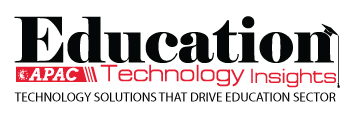THANK YOU FOR SUBSCRIBING
Be first to read the latest tech news, Industry Leader's Insights, and CIO interviews of medium and large enterprises exclusively from Education Technology Insights
Navigating AI Trends in Educational Technology
David Bourgeois, Director of the AI Lab, Biola University
 David Bourgeois, Director of the AI Lab, Biola University
David Bourgeois, Director of the AI Lab, Biola UniversityAs the Director of AI, I've had the privilege of observing firsthand the transformative impact that this technology is making on the educational landscape. Integrating it into education involves more than just adopting new tools; it requires rethinking and reshaping how we approach teaching and learning.
When AI first entered the educational arena, many of us were cautious and resistant, much like the skepticism we saw with past technological innovations like word processors. We worried that it might undermine learning and academic integrity. As a result, our focus shifted to detecting and preventing AI misuse, with the belief that controlling its use would preserve educational standards.
However, this approach has largely fallen short. Just as we couldn’t entirely replace typewriters with word processors, AI has become an inescapable part of education. A more effective strategy is to thoughtfully integrate it into the learning process rather than attempting to eliminate it.
Here are the key areas we’re focusing on:
Rethinking Teaching and Assessment: It challenges us to reevaluate traditional methods of teaching and assessing students. For example, in-class essays and exams are now being reconsidered as AI tools advance. We need to adapt these methods or create new types of assignments that utilize it. Assignments where students use AI for research, outlines, or collaborative projects are gaining traction. This helps students become familiar with the tools and integrates them into their learning experience.
Hybrid Assessments and Balancing Values: We’re exploring hybrid assessments that combine traditional methods with AI. For instance, in-class activities where students use it to refine their work can be highly effective. We’re also revisiting older methods that emphasize critical thinking and teamwork to ensure that its advantages are balanced with core educational values.
Understanding AI’s Ethical Implications: A crucial aspect of integrating AI is ensuring that everyone understands its ethical implications. Unlike older technologies, it operates in complex and often opaque ways. Many users interact with the tools without fully grasping how they work, raising concerns about biases, data privacy, and ethical use. Educational institutions need to provide clear explanations of how it functions and its potential impacts. At our institution, we're developing resources, such as explainer documents, to help users understand AI and ensure its use aligns with our ethical values.
"AI-powered tools can enhance educational outcomes, but we must ensure that students and educators are equipped to use them wisely."
As the technology continues to evolve, it’s essential for students to learn how to use these tools effectively in their fields. It is becoming increasingly integral to many industries, so understanding its application in their careers will give students a competitive edge.
We don’t need to rush into adopting every new technology immediately. Instead, we should focus on integrating the tools thoughtfully, ensuring they complement the skills and knowledge needed in specific fields. For example, students in data visualization and database management will benefit from learning how AI can enhance these processes.
Artificial Intelligence and the Future of Learning: What’s next?
AI’s role in education will expand significantly. Here are three key trends to watch:
Advanced Tools and Models: AI will continue to bring more sophisticated tools, such as chatbots that interact with course content and provide instant feedback. Improved models like ChatGPT will offer greater flexibility, making it crucial to decide between developing specialized tools for specific needs and leveraging general-purpose models.
Research and Integration: We’re researching whether custom-built tools offer more benefits compared to general models. This research will help us determine the most effective ways to implement AI in educational settings.
Balancing Innovation with Practicality: Although AI offers significant potential, it's essential to balance innovation with practical factors such as data availability and computing resources. Despite some initial doubts, the value of it in education is increasingly clear as educators utilize it to develop personalized learning resources.
By embracing AI as a tool to enhance learning, rethinking assessment methodologies, and ensuring ethical use, we can harness its potential to benefit students and educators. As the technology advances, staying informed and adaptable will be key to navigating its impact on education. The future of it in education is bright, and with thoughtful integration and ethical considerations, we can unlock its full capacity.
Read Also
From Isolation to Interaction: Reimagining Technology for Human Connection
Building an Understanding of AI in Learning Environments
Integrating SEL, Digital Citizenship, and AI Literacy in K–8 Schools
Preparing Students for More than their First Job
Moving Beyond Reaction to Proactive Student Engagement
Tech-Enabled, Human-Centered: Effective Student Support

I agree We use cookies on this website to enhance your user experience. By clicking any link on this page you are giving your consent for us to set cookies. More info






















